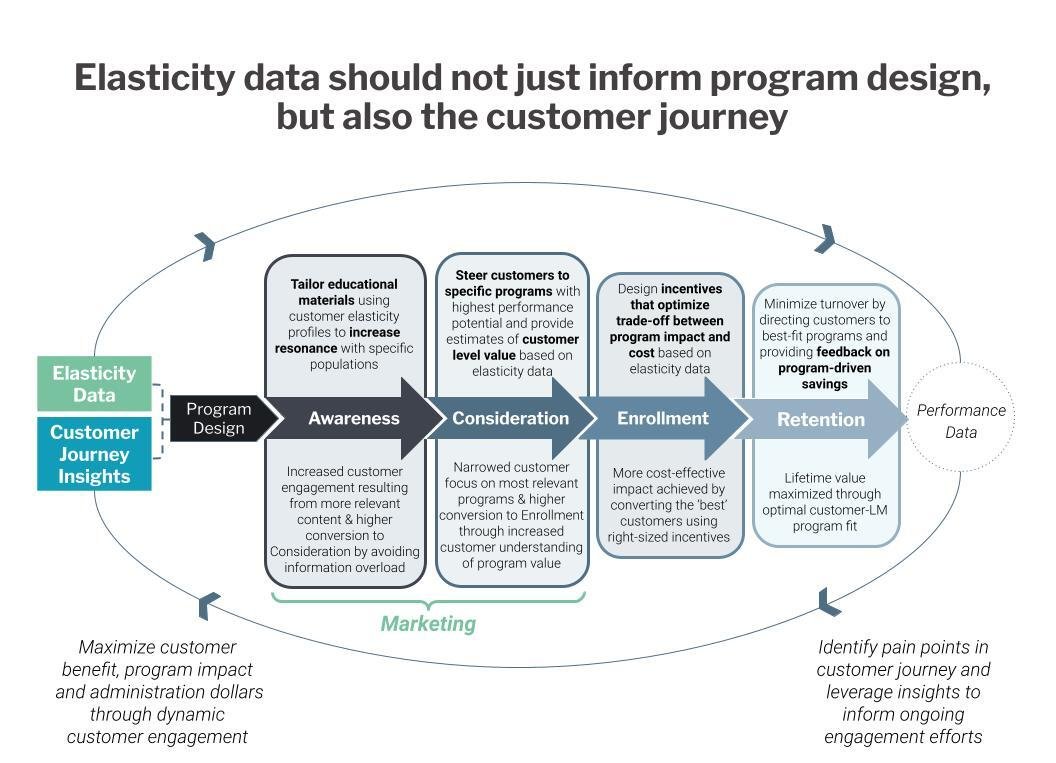An Integrative Electric Load Management Strategy
One of the US’ largest electric utilities has continued to face higher and higher daily and annual demand peaks, lower and lower net demand when solar production is high, and as a result an increasingly steep daily ramp-up especially during hot summer months. Meanwhile, traditional load management programs such as Demand Response, Energy Efficiency and Time-of-Use rates have failed to evolve with such rapid load shifts. In a co-creation exercise with our client, ADL re-imagined the utility’s load management strategy to better accommodate consumer preferences in addition to grid needs, and developed more than a dozen innovative program proposals to flatten the utility-wide net demand curve within 15 years.
The Situation
A leading investor-owned utility facing this increasing challenge retained ADL Ventures to develop a new framework for integrated load management, removing the traditional barriers between Demand Response (DR), Energy Efficiency (EE), and rate programs, optimizing customer satisfaction and minimizing program costs.
While distributed intermittent renewables like solar and wind comprise an increasing share of electric generation and reduce mid-day net demand, gross aggregate load continues to rise due to the electrification of vehicles and buildings. The result is wider variation in demand on a daily basis, complicating the minute-by-minute balancing of supply and demand and increasing the need for expensive, dirty, and seldom-used peaker plants. As regulatory pressures grow for utilities to evolve towards cleaner, cheaper, and more efficient power, demand flexibility is becoming a larger piece of the grid operations puzzle. Unfortunately, even within the world’s most advanced utilities, load management programs, including demand response, energy efficiency, and time-of-use rates tend to be limited in scope, cost-effectiveness, and performance.
Over time, daily minimum net load is expected to fall while maximum peak load is expected to increase, exacerbating the evening demand ramp.
The Goal
Deliver a systems approach to load management program implementation, which ensures all measures (DR, EE, and rate programs) work in concert to achieve influence over how and when consumers use electricity. ADL set out to achieve this goal by bringing a deep technical understanding of the current landscape, adopting a consumer-centric mindset, and creating and analyzing new tactics, strategies, and systems required for a successful comprehensive strategy.
ADL’s Approach
After reviewing thousands of pages of documentation on historical program design and performance, ADL focused on one question: which strategies are well suited for future circumstances and which require change? This required both a contextual understanding of the past, present, and future state of California’s supply and demand, as well as a theoretical analysis of how various programs could work together to accommodate shifting consumer preferences and needs. For example, ADL’s causal loop diagram below theorizes how the three tiers of load management tend to exhibit interactive effects.
Based on an extensive literature review and interviews with utility and customer representatives, ADL organized today’s challenges into five major categories, including the heterogeneity of customers and unreliability of human behavior. These categories served as our basis for designing a set of 20 specific tactics for addressing these barriers based on the three core enablers below.
Note: "LRC" refers to ADL's "Load Resource Curve" concept, described below in the "Results" section.
Results
In order to organize and prioritize our tactic ideation, ADL developed the concept of a “Load Resource Curve™,” akin to an electricity supply curve but representing the flexible capacity of demand broken down by end use (e.g. HVAC) and sector (e.g. residential) at a given time of day. This helped ADL prioritize our targets when designing our tactics.
An ADL Concept: Load Resource Curve™
*A Load Resource Curve at the load pocket level would show the higher of the cost of FTM storage OR the allocated cost of T&D upgrades. Note that the measurements & numbers included in this figure are not empirical and are for illustrative purposes only.
One critical feature of ADL’s Load Resource Curve is the establishment of thresholds at (a) the maximum price differential for time-of-use rate programs, and (b) the cost of in-front-of-meter battery storage. Load categories that are more expensive to address (per MW) than the cost of batteries are relatively inelastic and thus best addressed with energy efficiency (to reduce inelastic load) and storage to simulate load shift. On the other end, load categories that are particularly elastic (i.e. price-sensitive) could and should be addressed with rate programs. Other medium-elastic demand categories could be addressed with demand response programs and targeted with automation technologies.
Using this framework, ADL designed a series of more than 20 specific tactics which together could address all types of end-use loads. For each tactic, ADL delivered a short-, medium- and long-term design framework, and modeled the costs and benefits for a preliminary cost-effectiveness estimate.
Finally, ADL made the recommendation to develop consumer elasticity estimates based on meter data, paired with load disaggregation to model flexibility at the appliance or equipment level. These data could be especially useful not just to inform program design but also crafting the customer journey to optimize marketing and enrollment.





